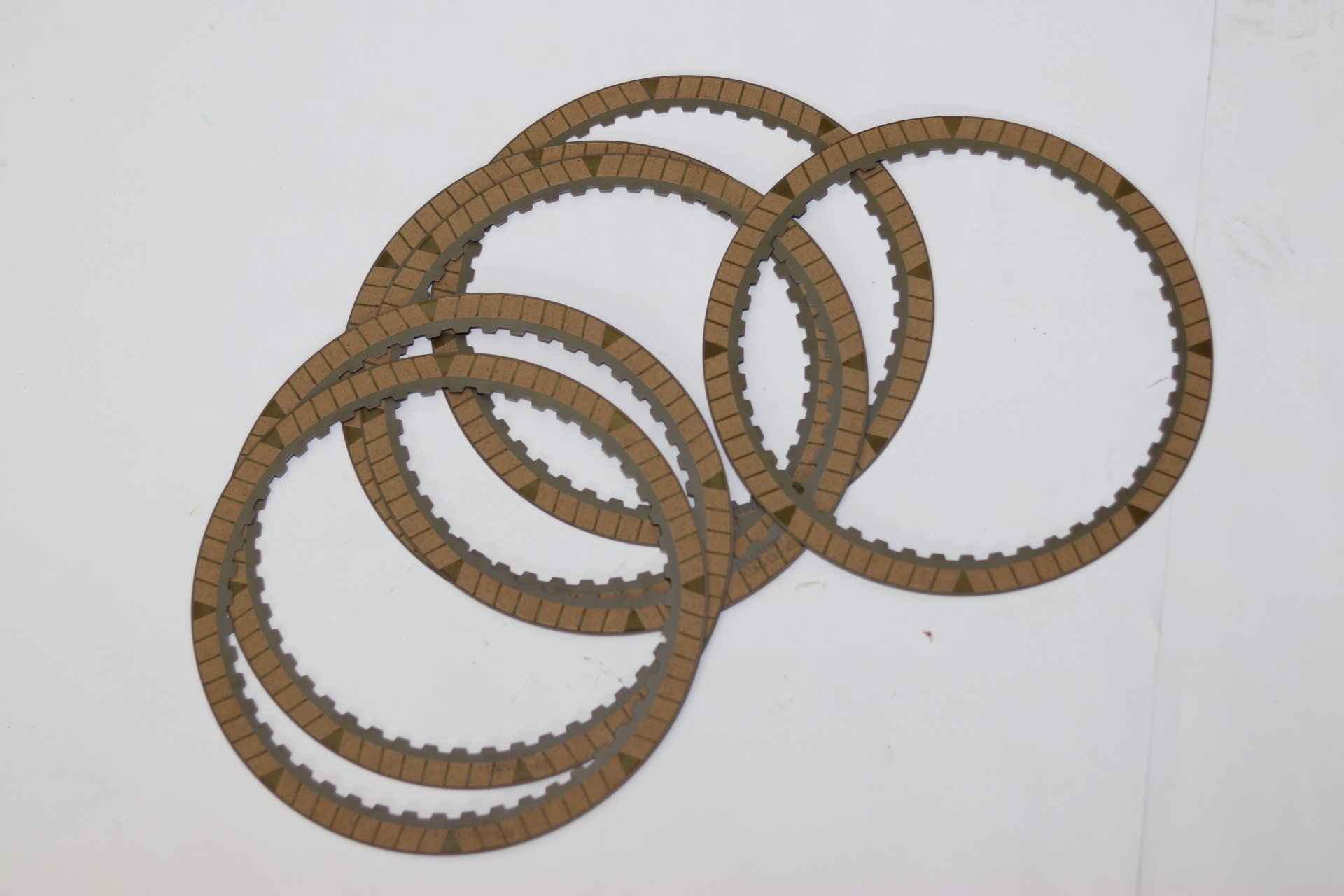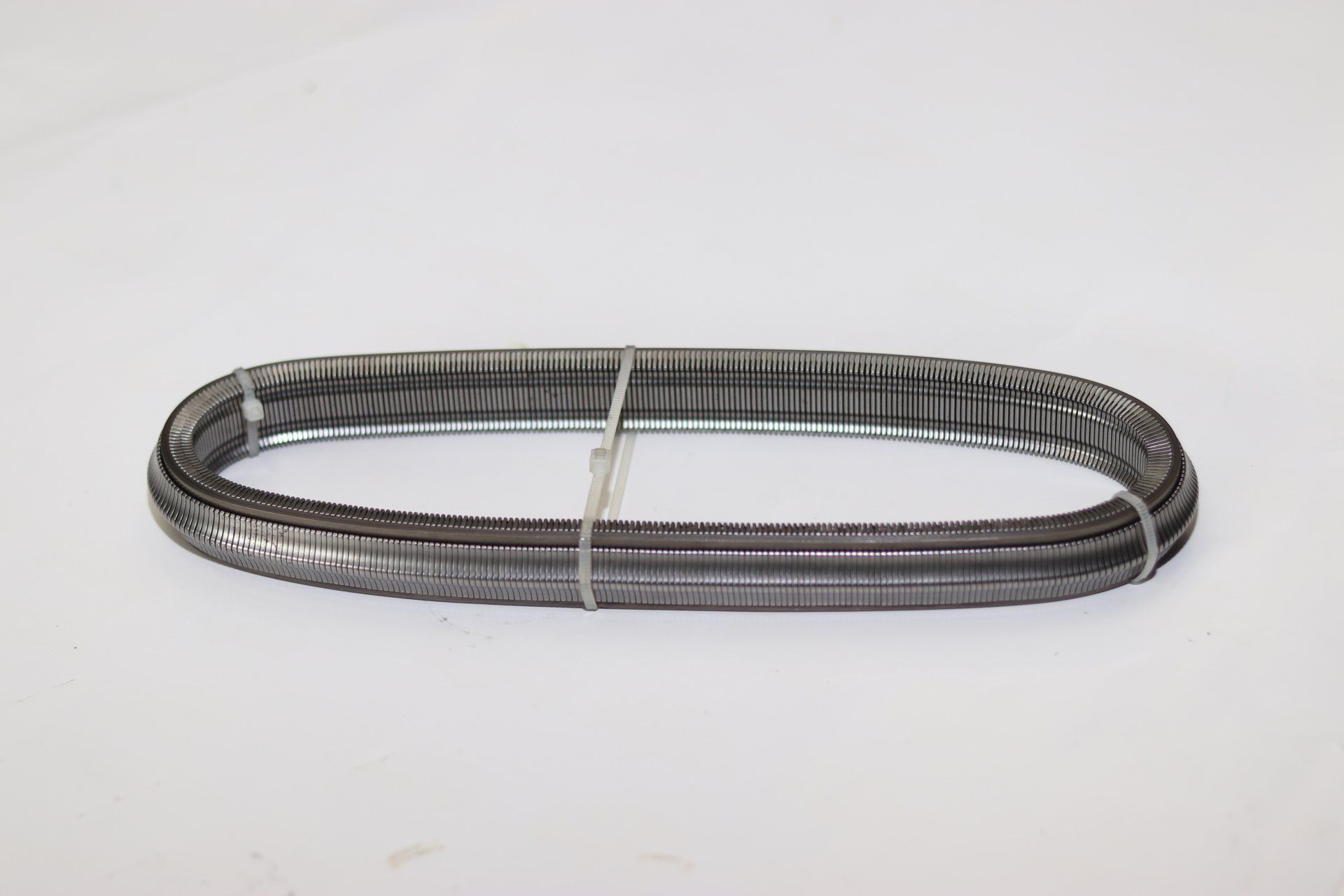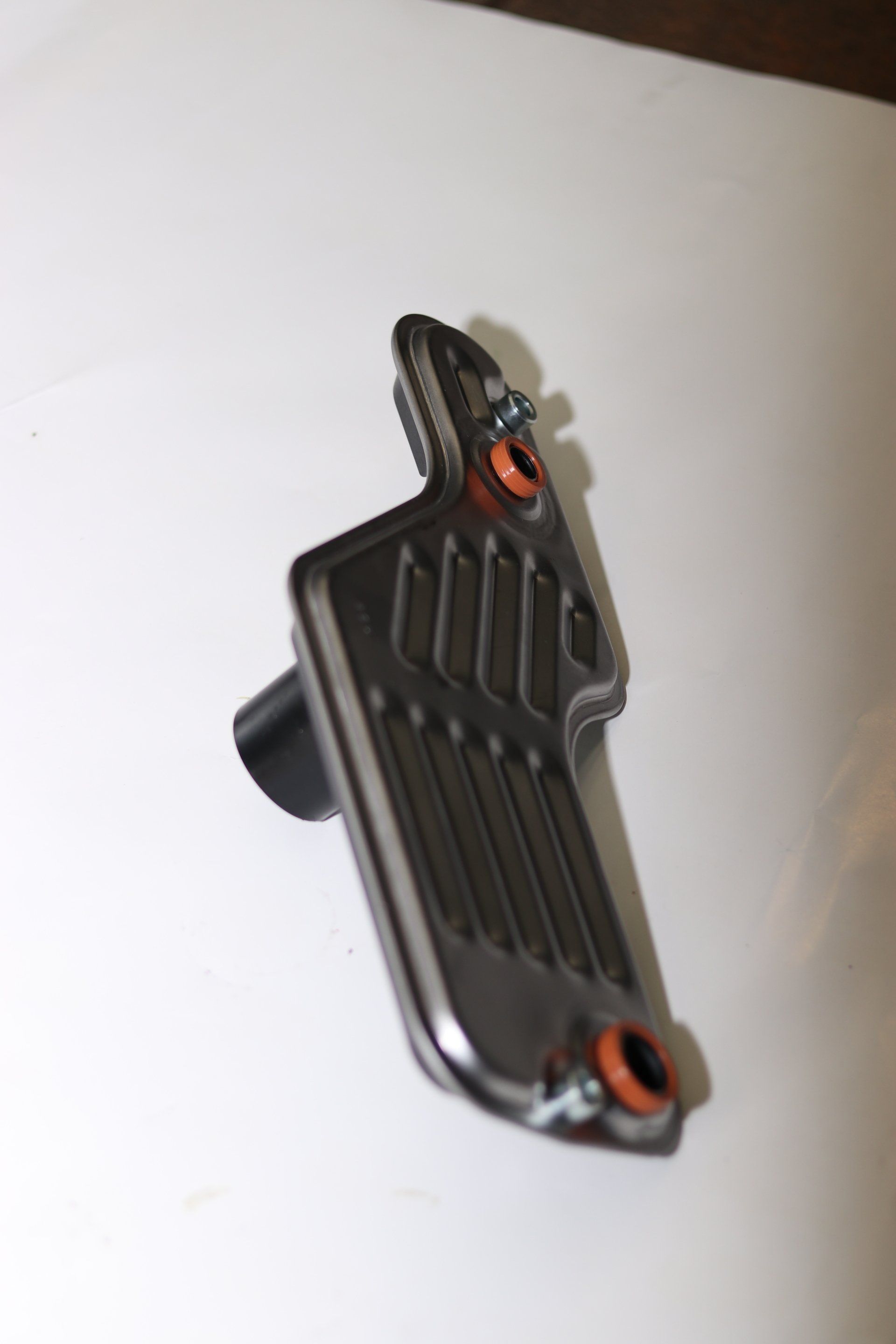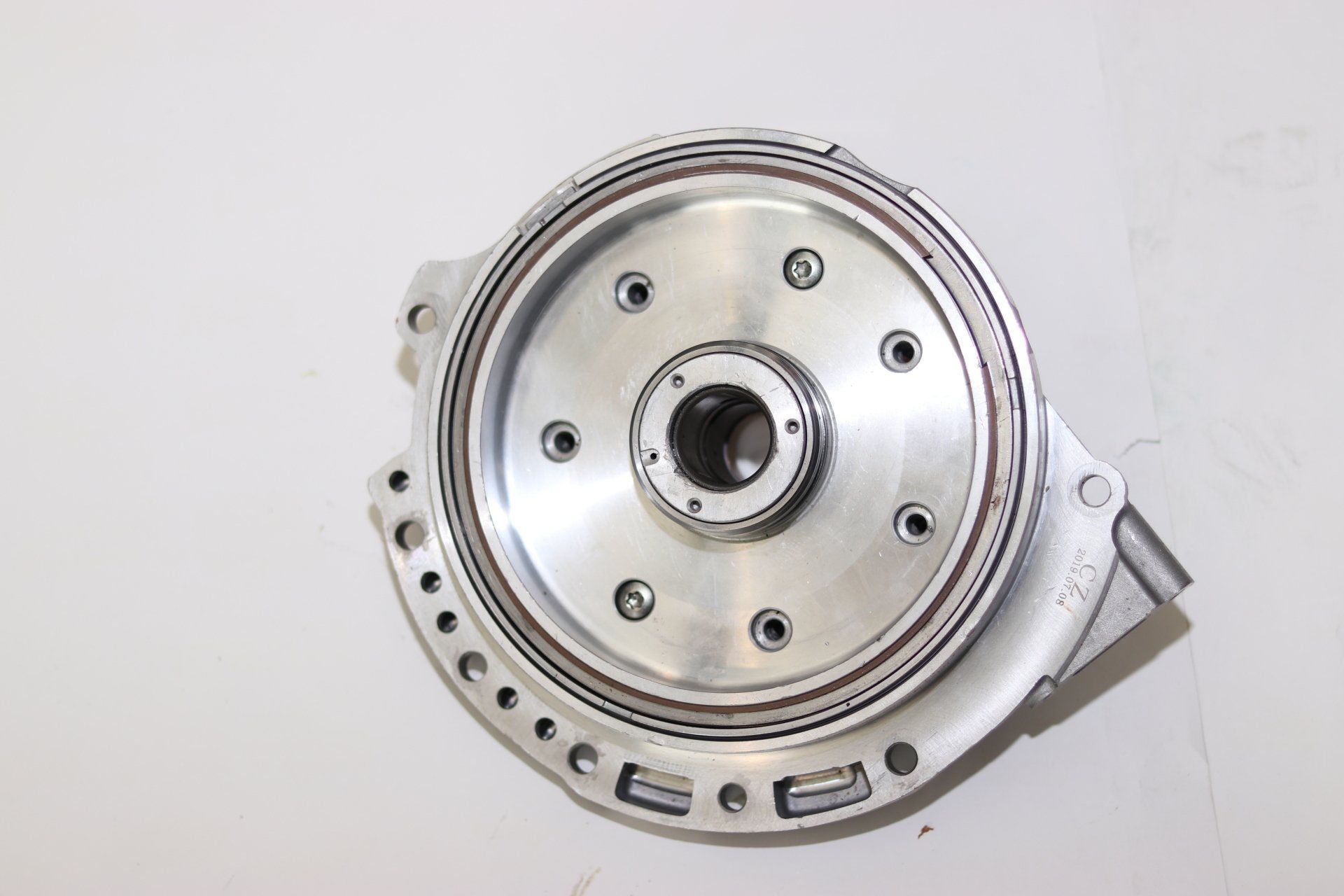Automatic Transmission - Torque Converter Clutch
Automatic transmission, arrangement of gears, brakes, clutches, a fluid drive, and governing devices that automatically changes the speed ratio between the engine and the wheels of an automobile. Since its introduction in 1939, the fully automatic transmission has become optional or standard equipment on most passenger cars.
When the transmission is in the drive position, the driver has only to depress the accelerator pedal. As the car gathers speed the transmission will shift automatically through its entire forward range of gears from low to high (ratios of the speeds of drive shaft and engine shaft) until the two shafts are directly connected through the oil in the fluid drive, which may be either a two-element fluid coupling or a three-element torque converter. When the car loses speed the transmission automatically shifts back from high to low gear.
Automatic transmission components and torque converter clutch
- Torque Converter
- Oil Pump
- Planetary Gear Set
- Clutch Packs
- Output Shaft
- Brake Band
- Oil Pan
- Valve Body
The basic components of an automatic transmission are described below.
Torque Converter
On automatic transmissions, the torque converter takes the place of the clutch found on standard shift vehicles. It is there to allow the engine to continue running when the vehicle comes to a stop.
The torque converter is a large doughnut-shaped fluid coupling (10″ to 15″ in diameter) that is mounted between the engine and the transmission. It consists of three internal elements that work together to transmit power to the transmission. The three elements of the torque converter are the Pump, the Turbine, and the Stator.
Oil Pump
The oil pump inside of an automatic transmission works just like any other oil pump. It delivers transmission fluid from the transmission pan to the valve body, which directs all the various components throughout the transmission as needed.
Planetary Gear Set
Unlike a manual transmission, which has a set of multiple gears that make up the gearbox, an automatic transmission has one or more (usually more) planetary gear sets.
Planetary gears have three sets of gears. The main gear is the sun gear, and it is in the center of the planetary carrier. The second set is the planetary gears. There are typically three or more of these gears and the mesh between the sun gear and the ring gear.
The ring gear surrounds all of the planetary gears with one ring, connecting the entire system and bringing it together. The system works by locking two of the three gear sets at a time. Since each gear set is a different size, this gives you a multitude of gear ratios by merely locking the other gears in place.
Clutch Packs
With a manual transmission, you manually select the gear you want to engage. An automatic transmission is a little more complicated. Instead of a manual shifter to get your output to the desired ratio, your transmission uses a clutch pack.
A clutch pack has multiple plates compressed together. When the valve body sends oil pressure to the clutch pack, it locks a certain number of clutch packs together, giving you your desired output ratio. Different amounts of oil pressure engage different quantities of discs, which gives your hub a different gear ratio.
Output Shaft
Once your transmission has completed all of its internal operations. It delivers power to the driveshaft, which in turn supplies power to the hubs. But your transmission’s output shaft is what drives the drive shaft.
On one end, you have a gear that connects to the transmission,. On the other end, you have a splined shaft that connects to the driveshaft via a yoke-type universal joint.
Brake Band
Brake bands serve one purpose which is to temporarily hold planetary gears. They allow the engine RPM to get in line with the gear ratio before releasing, which allows for smoother shifting.
Brake bands work much like drum brakes, with a piston squeezing the band around a drum. The harder the piston pushes, the more braking power is applied.
Oil Pan
Just like your engine has an oil pan on the bottom, so does your transmission. It does exactly what you think it would; it holds the excess transmission fluid (oil) for the oil pump to pull from when needed. It typically has a transmission fluid filter attached, either internally or externally.
Valve Body
Your engine has an ECU, and your automatic transmission has a valve body. This component directs all the pressure from the oil pump to all of your transmission components to get the desired results. From the torque converter to the clutch packs, nothing gets transmission fluid without the valve body telling it where to go.
In an automatic transmission, it’s controlled by sensors. Which work directly with the transmission control module (TCM) to control where all the fluids are sent. It’s a complicated component, but it’s the most important one in your transmission.
For any of the above
torque converter clutch
contact Gearbox Parts today.









